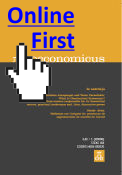Real Exchange Rate, Wage-led Policies, and Demand Growth in Brazil: a Regime Switching and Time Sensitive Study
DOI:
https://doi.org/10.2298/PAN221112006IKeywords:
Real exchange rate, Wage-led policies, Income distribution, Demand growth, BrazilAbstract
The aim of this article is twofold. First, we discuss stylized facts about the Brazilian economy related to the redistribution of income to labor, and the appreciation of the real exchange rate, examining their influence on demand growth. Second, the article empirically investigates the influence that both increasing real wages and depreciating the real exchange rate had on the short-term performance of Brazilian manufacturing between 2002 and 2020. To this end, a set of time series regressions is estimated using two methods. Markov-switching model estimates provide some evidence that reducing the real wage, or appreciating the national currency, had some positive influence on growth in industrial demand during normal periods, however, this did not apply during periods of crisis. On the other hand, wavelet estimates suggest that, between 2002 and 2005, a growth strategy based on increasing the real minimum wage was a coherent policy for boosting short-term industrial demand.
JEL: E00, E24, O15.






